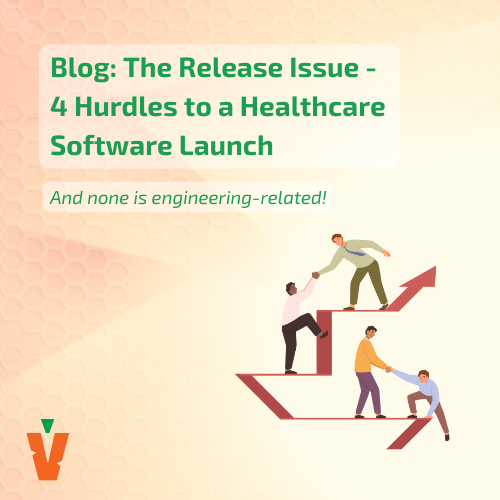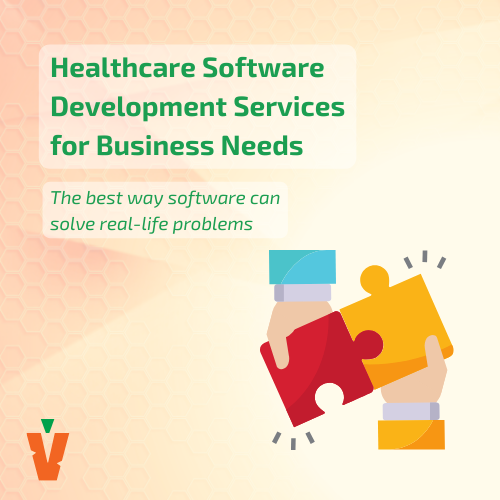As a health tech company executive, you’re no stranger to the struggles of a healthcare software launch. You know the stakes of getting it wrong and the grit it takes to get it right. However, what if we told you the biggest obstacle to reaching this milestone isn’t the tech, financing, or competitors?
The people who make up your business can make or break the launch.
Our CEO, Andrei Ismail, has ample experience in the software development industry, first as an engineer and later as an executive. Today, he shares his insights into the software release process and the non-tech issues that can impede its success.
Keep reading to discover four non-engineering hurdles to releasing software and how you can overcome them.
How Healthcare Software Companies View Release Moments
Software release moments are pivotal for healthcare tech companies. They’re times when you position yourself on the market, showcase your innovations, and start changing the industry with your products.
Since that’s the case, why are product launches so rare in healthcare?
Because releasing new software is risky — it’s much easier to rely on what already exists and stick to the status quo. Healthcare giants are the main players that have this attitude, but it trickles down, impacting the work of the entire industry.
While startups have frequent release cadence, corporations rarely build software in-house. They tend to move at a glacial pace due to bureaucracy, reliance on legacy systems, and the desire to avoid risks and maintain their reputations. Many purchase existing software solutions instead of developing new ones from scratch, even when better options are sorely needed.
But we can’t blame everything on the desire to profit (even if it’s a big motivator). The stakes are high in healthcare, with strict regulations and government agencies that make it painfully slow to get yourself verified. It’s hard to push things forward even when you have money and reputation to back you up, so many wonder why they should even bother.
Because of that we must speed up the pace of change in healthcare. Otherwise, we’ll never introduce the technologies that improve its quality and outcomes. With increasing demand for digital solutions and evolving patient expectations, we need to release software — and do it sooner rather than later.
What’s Stopping Your Software Launch?
A healthcare software launch involves various hurdles, some of which are technical and others non-engineering-related. Today, we focus on the latter category.
1. The Company Culture
The company culture defines the norms, values, and behaviors of your business and employees. It also affects how you see a software release and whether you execute it successfully.
Many companies view the launch as a moving target, with ideas added as time progresses. They don’t stick to a plan to release on time, wasting hundreds of thousands of dollars without gaining the profit of a finished product. They’re always capable of saying that they’re working on something, though, which they consider good enough.
Let’s give an example. In Vitamin, we prioritize the product launch plan and timeline, even if it means coming out with an imperfect MVP. We fix errors once we break through the initial barrier and gain feedback from early adopters. For many companies, doing so is unimaginable — the employees would never be the ones to propose it, and the board wouldn’t let it fly.
The board puts pressure on the development team and Project Managers to stick to the rules and never deviate from the status quo. So they polish and polish the software, never letting it go past the ‘minimal viable product,’ delaying iterations and eventual release.
2. The Language of the Launch
The terminology and expectations surrounding project deliverables are vital. As executives, we sometimes resort to loaded language but forget to explain what we mean to all involved parties. So we end up in a situation like ‘minimal viable product’ or ‘beta release’ means different things to engineers and the board of directors, misunderstandings ensue, and the release date gets delayed.
Ambiguous language leaves people confused about what constitutes a viable product launch. You must be clear on what’s expected in each stage of the product if you ever want it finished.
Instead of relying on buzzwords or industry jargon, use language that reflects the intended outcomes of the launch. You should also lead by example to foster a culture of transparency. When the CEO isn’t afraid to make half-baked suggestions or ask clarifying questions, other employees are comfortable to do the same.
3. The Definition of ‘Done’
The definition of ‘done’ is a benchmark for determining if you’re ready for a healthcare software launch. Unclear expectations breed uncertainty within the team, making it resist the final step.
Determine clear and rigorous success criteria for software launches. That way, your teams will know when they’ve done their job and finalized a product, reducing the risk of delays due to uncertainty.
In our experience, it’s best to define deliverables when taking on a product and turn them into a product launch plan checklist. When you tick the final box, you’re ready to release the software. Any other requirements should arrive in subsequent versions unless they’re vital for compliance or usability.
Remember, a ‘done’ product isn’t set-it-and-forget-it. By soliciting feedback from end-users and stakeholders, companies can identify areas for improvement after the software release.
4. The Perception of the Launch
We’ve worked with many companies who see the launch as the end game. No wonder they resort to polishing the software endlessly and never releasing it! Teams and their leaders must recognize that the healthcare software launch is the start of a long improvement journey. It puts you out there, but you’re far from finished.
After releasing a product, you start the post-launch activities to maximize value delivery and user satisfaction. They include customer support, user training, ongoing maintenance, and iterative enhancements. Your ‘final release’ version may look totally different in a year due to feedback and edits.
At Vitamin, we offer warranties and monthly maintenance after we release a piece of software. We know the environment will change, requiring tweaks or revamps to keep working as intended. That’s part of the process, making our PMs more comfortable to declare a project ‘release-ready.’
Our Takeaways & Your Next Steps
While it’s easy to get deep into the technical details of a healthcare software launch, company leaders must not disregard the cultural issues surrounding it.
Take the time to listen to your team and notice if any issues we mentioned emerge in their speech or behavior. Then, adopt a strategic approach to address their misconceptions and enhance your odds of a successful software release.
Does your product launch plan acknowledge the human factor? If our blog resonated with you, odds are you need to shift the company culture. Schedule a consultation to get actionable tips from our leadership, who have first-hand experience on this matter.


.png)
.png)
